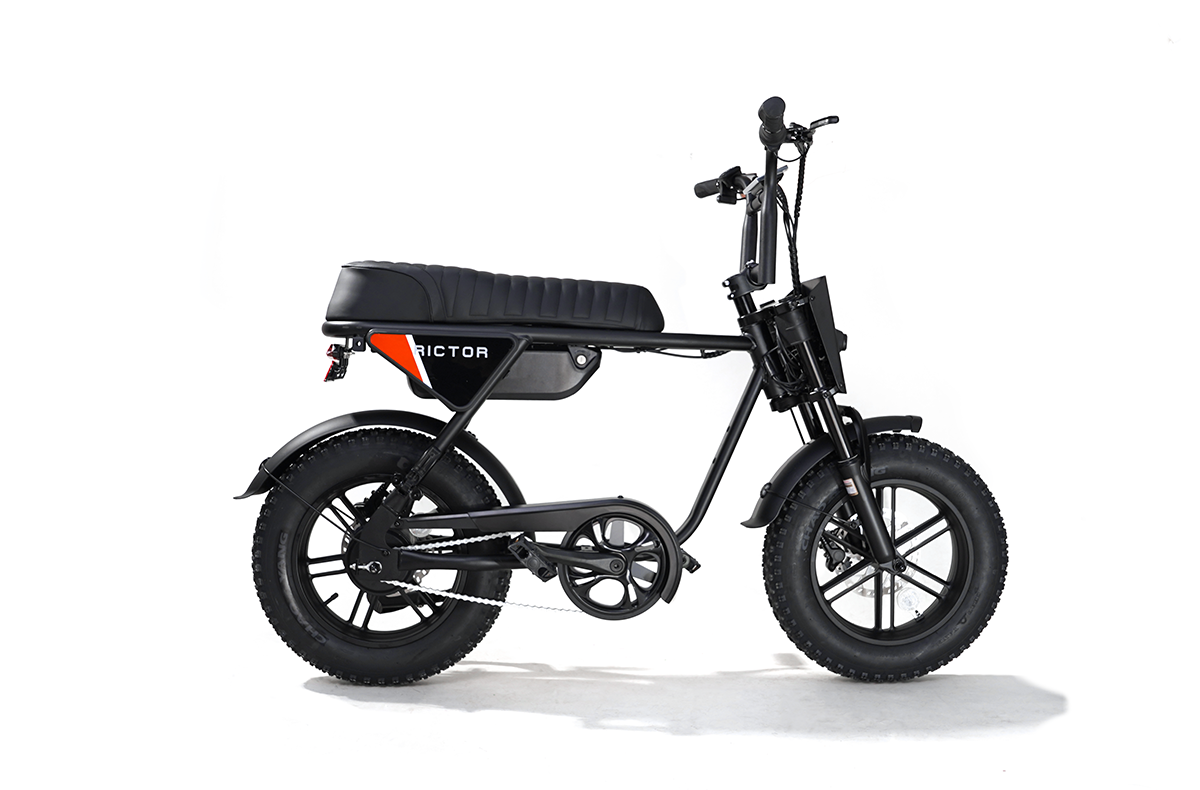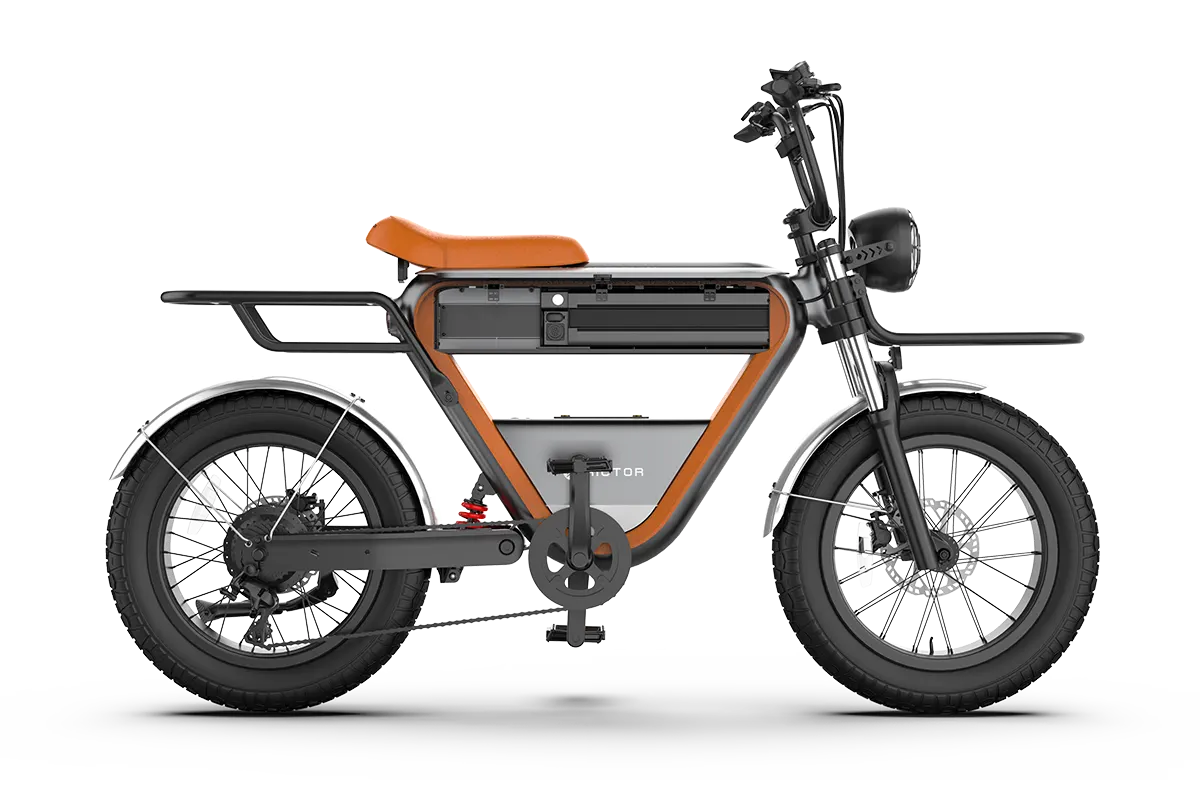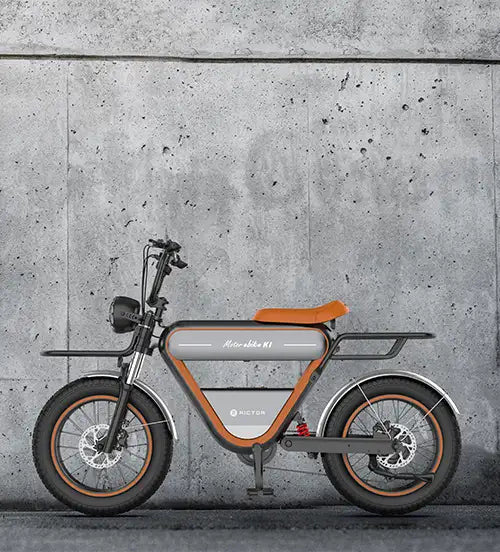
Bike Durability | How Long Do E-Bikes Last?
One of the biggest questions people have about e-bikes is, “How long do these things last?”
Sure, they want to know about the battery, but let’s be real—if you’re riding it hard enough, you’re probably wondering when the rest of it might start falling apart too!
Don’t worry, we’re here to break down the lifespan of electric bikes, from the battery to the brakes, and everything in between.
That said, we’ve seen a lot of bikes, but the Rictor K1 really stands out when it comes to durability.
This thing is tough as nails! It’s built to handle any challenge, no matter how tough the ride gets, with solid construction and high-quality parts that won’t let you down.
Battery Lifespan
The battery is one of the most important components of an electric bike, and its longevity greatly impacts the overall lifespan of the bike itself.
Typically,electric bike batteries last between 3 to 5 years, depending on their quality, usage, and how well they are maintained.
Measured in charge cycles, most bike batteries are rated to last between 500 to 1,000 charge cycles.
For someone who rides frequently, this translates to about 2 to 5 years before the battery begins to degrade and holds less charge.
Most modern electric bikes are equipped with lithium-ion batteries, known for their longer life compared to older technologies like lead-acid batteries. A higher-quality lithium-ion battery can last closer to 5 years with regular use.
Tips to extend ebike battery life
-
Avoid full discharge: It’s a good practice to avoid letting the battery fully discharge. Instead, charge it when it drops to around 20-30%.
-
Don’t charge to 100% regularly: Regularly charging your battery to 100% can cause wear over time. Aim to keep the charge between 20-80% for daily use, following the 80%-20% rule.
-
Avoid extreme temperatures: High heat and freezing conditions can significantly shorten the life of a battery. Store and charge your bicycle in a temperature-controlled environment.
-
Regular use: Batteries tend to deteriorate faster if they are left unused for long periods. Ensure you’re riding your bike consistently or storing it with a partial charge.

SEE ALSO What Are You Doing with Your Ebike When the Battery is Dead?
Motor
Electric bike motors do have a limited lifespan, but the good news is that they generally last longer than the battery.
A typical hub motor or mid-drive motor can last 10,000 to 15,000 miles or even more, depending on how it's used and maintained.
Some motors, especially high-quality ones from well-known brands like Bosch or Yamaha, can easily surpass this range with proper care.
However, like all mechanical components, electric bike motors are subject to wear and tear.
Over time, dirt, debris, and excessive strain can lead to diminished performance.
Regular cleaning, proper usage, and avoiding overexertion on steep terrains can help prolong motor life.
If an ebike motor starts losing power, overheating, or making unusual noises, these are signs that it may be nearing the end of its usable life, but these issues can often be repaired or serviced.

Factors Affecting Lifespan
Battery quality and care
The lifespan of your ebike’s battery depends heavily on how well it is maintained. Poor charging habits, such as overcharging or frequently letting the battery drain to zero, can significantly reduce its longevity.
Extreme temperatures also play a role—exposing the battery to excessive heat or cold can degrade its cells more rapidly.
Regular, moderate charging practices and storing the battery in a climate-controlled environment can greatly extend its life, ensuring that it performs optimally for years.
Load
The total load carried by the motorized bike, including the rider and any additional cargo, has a substantial impact on the bike's performance and lifespan.
Heavier loads put more strain on the motor and battery, requiring these components to work harder to maintain the same level of performance.
This increased effort can lead to faster battery drain and greater wear on the motor, reducing their long-term durability.
In addition to the motor and battery, the frame and suspension experience more stress under heavy loads, which can cause structural fatigue over time, especially if the bike isn’t designed to support higher weights.
Regularly carrying significant loads without considering the bike’s weight capacity can lead to quicker wear and a shorter overall lifespan for the electric bike.
Frequency of use
How often you use your bike influences how long it will last.
Regular use keeps the motor and battery in good working condition, as these components are designed to operate best when used consistently.
If the electrical bike is left idle for extended periods, the battery can degrade faster, and parts such as the chain, tires, and seals may dry out or crack due to inactivity.
Excessive daily use without proper maintenance can also wear down components quickly, particularly the tires, brakes, and chain, so finding a balance between use and care is essential for longevity.
Terrain
Terrain plays a significant role in how long a bike will last.
Riding on uneven surfaces such as gravel or mountain trails increases wear on the tires and suspension systems, leading to more frequent replacements and repairs.
Regular use on hilly or steep terrain places more strain on both the motor and battery, causing them to wear out faster due to the added demand for power.
If your riding is primarily on smooth, paved roads, your ebike and its components will endure far less stress, extending their life considerably.
Smooth roads also allow for more consistent battery performance and reduced motor strain, contributing to an overall longer lifespan.
Maintenance and Repairs
Regular maintenance is crucial in extending the lifespan of an electric bike.
Cleaning: Dirt and debris can accumulate on moving parts such as the chain, gears, and motor. Regular cleaning helps prevent this buildup, which can otherwise cause damage and reduce performance. Keeping your bike clean will help avoid premature wear and ensure smooth operation.
Lubrication: Keeping the chain and other mechanical parts well-lubricated ensures smooth operation and prevents rust and corrosion. Lubrication reduces friction, prolonging the life of the chain and drivetrain while maintaining optimal performance.
Checking the brakes: Worn brake pads can lead to unsafe riding conditions and put extra strain on the motor. Regularly checking and replacing brake pads ensures both safety and optimal performance, as worn pads can make the bike harder to stop, requiring more motor effort.
Motor servicing: Some motors need periodic servicing or recalibration to maintain peak performance. Failing to do so can lead to motor overheating, reduced efficiency, or even failure. Regular motor maintenance helps avoid costly repairs or replacements.
Extend E-Bike Life with Upgrades
Upgrading certain parts of your electric bike can definitely help extend its life, but knowing when to make those changes is key.
When your battery starts to show signs of reduced range or takes longer to charge, it's a good indication that it's time for a replacement.
A higher-capacity battery will keep your bike performing at its best.
If you're noticing your motor struggling with hills or more difficult terrain, or if it overheats frequently, an upgrade to a stronger motor will take the pressure off the rest of the bike and improve overall durability.
Other components, like tires, should be replaced when the tread is worn or if you ride frequently on rough surfaces.
Durable tires will hold up better and help protect your bike from unnecessary wear. Brakes are another critical part—if they start losing responsiveness, it's time to upgrade.
Better brakes not only improve safety but also take some strain off the motor.
If your rides feel bumpier than they used to, upgrading the suspension can help smooth things out and protect the frame from excess damage.
Making these changes as soon as you notice performance issues keeps your e-bike running smoothly and extends its lifespan, rather than waiting for parts to fail completely.
FAQs
Can I use a regular bike mechanic to service my e-bike, or do I need a specialist?
While many bike mechanics can handle basic maintenance tasks like adjusting brakes and replacing tires, it's best to consult a specialist for electric-specific components, such as the motor and battery.
What kind of weather conditions can negatively impact an electric bike’s lifespan?
Riding in extreme temperatures—either very hot or very cold—can affect the battery’s performance and shorten its lifespan. Excessive moisture from rain or snow can also damage electronic components if your e-bike isn't properly waterproofed.
Is it worth investing in puncture-resistant tires for an electric bike?
Yes, puncture-resistant tires can save you time and money by reducing the chances of flats, especially if you ride on rough or debris-filled roads frequently.




